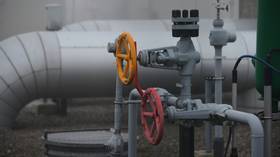EU gas stocks shrink – data

Emergency supplies of natural gas in EU underground storage facilities have fallen below 65%, according to Gas Infrastructure Europe (GIE) data released on Wednesday.
The bloc is trying to save gas primarily at the expense of demand in the industry, while relatively mild weather has also helped reduce energy consumption. However, current gas inventories stand below levels recorded in the same period in 2020, according to GIE.
As of February 15, gas reservoirs in the EU were 64,81% full, with overall volumes of 70.55 billion cubic meters (bcm). Inventories in Hungary had tumbled to 51.45%, in France to 50.43% and to 40.83% in Latvia, according to data.
For now, storage levels are providing some cushion for Europe but, if a cold snap in March were to burn through stores or if demand from China recovers sharply, gas prices could skyrocket again, analysts warn.
GIE expects that during this winter underground storage facilities' inventories will drop by 60 bcm to a total of 40 bcm, which would be 8% lower than the average level of gas stocks over the last five years.
In January, the head of the European Commission, Ursula von der Leyen, claimed that the EU has reduced Russian gas imports by 80%. To offset gas-supply shortfalls, the EU resorted to highly priced shipments of Liquefied Natural Gas (LNG) from the US and Qatar, and to increased pipeline imports from Norway and Azerbaijan. This led to a spike in European natural gas prices and Asian spot LNG prices in the third quarter of 2022.
For more stories on economy & finance visit RT's business section












